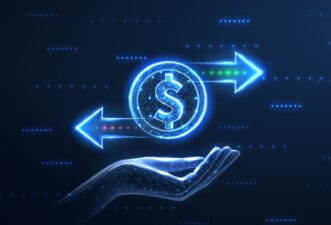Passive-income investing is popular these days, and I understand why. The pandemic has shown many Canadians that life is about more than just working to the bone. If you’re ahead, why not coast a bit, right? Having a passive-income stream is critical for that.
For those with a decent nest egg saved up and wanting to take their foot off the pedal for a bit, I want to chat about the Tax-Free Savings Account (TFSA) and explain how investors can turn it into a fun and rewarding passive-income tool.
Let’s be honest; nobody wants to give up their hard-earned passive income to taxes. By using a TFSA, you can say goodbye to that worry!
Our goal, though, isn’t to drain our TFSAs. Instead, we want an investment that generates a steady, consistently high income every month. And today, I have just the exchange-traded fund (ETF) that pays out monthly and with a much higher yield than regular dividend stocks.
First, max out the TFSA
Let’s start with a quick recap of the main benefit of a TFSA: Canadian dividends and interest income earned and withdrawn from a TFSA are 100% tax free. How awesome is that?
Naturally, this account is perfect for passive income investors. But it does require some capital to get going. As the saying goes, “you need money to make money.” To generate a decent passive-income stream, you’ll need an ample amount of money in your TFSA.
Depending on your age, you could have up to $88,000 in contribution room if you’ve never invested in a TFSA before 2023. Each year, your TFSA limit goes up. In 2023, the TFSA contribution limit hopped from $6,000 to $6,500. If you can, consider contributing that amount to max out your TFSA.
With $88,000 sitting in a TFSA in cash, the possibilities are endless. Personally, I’d invest it for growth as I don’t need passive income. However, if you want to get a passive-income stream going, I have just the ETF for you to consider below.
Covered call ETFs
Now, my own TFSA is filled with low-cost index ETFs, but that’s because I’m not a passive-income investor. Right now, I’m all about long-term growth.
If you’re craving high monthly income, a fantastic alternative to index funds that beats the yield on most individual dividend stocks is something like BMO Covered Call Dow Jones Industrial Average ETF (TSX:ZWA). Here’s how it works.
First, the ETF tracks the famous Dow Jones Industrial Average: a price-weighted index of 30 blue-chip, U.S. stocks, many of which already pay decent dividend yields.
Then the ETF sells covered call options to scoop up extra income. Essentially, these covered call options transform the future share price growth of the Dow Jones into steady present income.
Combined, these features give ZWA a high yield that is paid out monthly. Right now, the annualized distribution yield for ZWA sits at 6.55%.
Monthly passive-income potential
Assuming ZWA’s most recent March monthly distribution of $0.13 and current share price at the time of writing of $24.03 remained consistent moving forward, an investor who buys $88,000 worth of ZWA could expect the following monthly payout:
| COMPANY | RECENT PRICE | NUMBER OF SHARES | DIVIDEND | TOTAL PAYOUT | FREQUENCY |
| ZWA | $24.03 | 3,662 | $0.13 | $476.06 | Monthly |
That being said, investing $88,000 into ZWA isn’t the best for diversification, given that it only holds 30 U.S. stocks. Consider augmenting ZWA with some Canadian dividend stock picks (and the Fool has some great suggestions for those below).








